We live in an age of specialization. Most of us are removed, often by many layers, from the origins of the objects we use daily. A chair isn’t simply ‘made’; it’s designed in software, manufactured by robots, shipped across continents, and assembled (perhaps) by someone who has never felled a tree. This detachment has led to the fading – and often complete disappearance – of skills once fundamental to society. These aren’t just ‘old jobs’; they represent a wealth of knowledge, a connection to materials, and a particular way of understanding the world. This article explores a fascinating, and often melancholic, lexicon of lost trades, examining not just *what* these jobs were, but *how* they were done, and what their loss signifies.
The Pre-Industrial World: A Tapestry of Skill
Before mass production, nearly everything was made by hand. This wasn’t necessarily romantic; it was often arduous and time-consuming. But it fostered a level of skill and artistry that’s difficult to comprehend today. Trades weren’t simply jobs; they were apprenticeships, passed down through generations. A young person didn’t just learn *to* make something; they learned the properties of the materials, the history of the craft, and the subtle nuances that separated competence from mastery.
The Limner: Painting Portraits Before Photography
Long before the advent of photography, if you wanted a likeness of yourself or a loved one, you commissioned a limner. A limner wasn’t quite a ‘painter’ in the grand artistic sense, but rather a skilled artisan specializing in portraiture, often working with watercolor, tempera, or early oils on wood or ivory. They weren’t necessarily wealthy; many limners traveled from town to town, offering their services to those who could afford them. Their work was often characterized by a delicate realism and a focus on capturing the sitter’s character, rather than striving for perfect anatomical accuracy. The decline of limning coincided directly with the rise of the daguerreotype and other photographic processes in the 19th century.
The Fletcher: Crafting the Arrows of War and Sport
The fletcher was the artisan responsible for making arrows – a vital skill for both hunting and warfare for millennia. This wasn’t simply about attaching a point to a shaft. A skilled fletcher understood the specific properties of different woods, the best feathers for stabilization, and the precise angles needed for optimal flight. They’d carefully select and straighten the shafts, notch them accurately, and bind the feathers with linen thread and glue. The art of fletching declined with the widespread adoption of firearms, though it has seen a small resurgence among historical reenactors and archery enthusiasts.
The Coopers: Binding the World in Wood
Barrels, tubs, and vats – essential containers for everything from water and wine to gunpowder and salted fish – were the domain of the cooper. Cooperage was a highly skilled trade, requiring an understanding of wood grain, joinery, and the principles of watertight construction. Coopers didn’t simply assemble pre-cut pieces; they shaped the staves (the individual wooden slats) themselves, using a combination of hand tools and specialized lathes. The ability to create a perfectly sealed barrel was crucial for preserving goods, and skilled coopers were highly valued. The rise of metal and plastic containers led to the decline of traditional cooperage, though a niche market for handcrafted barrels persists, particularly in the wine and spirits industries.
The 19th and 20th Centuries: Industrialization and Displacement
The Industrial Revolution dramatically accelerated the rate at which trades were lost. Machines could produce goods faster and cheaper than any artisan, leading to widespread unemployment and the erosion of traditional skills. However, many trades didn’t disappear overnight; they evolved, adapted, or lingered on in specialized areas.
The Knocker-Upper: A Wake-Up Call for a Pre-Alarm Clock World
Before widespread access to alarm clocks, many people – particularly those in industrial towns and cities – relied on a ‘knocker-upper’. This individual would physically knock on the windows of their clients, using a long pole or even a specially designed rapping tool, to wake them for work. It was a surprisingly common occupation, especially for elderly people or children. The knocker-upper’s reliability was paramount; a missed wake-up call could mean lost wages or even dismissal. The advent of affordable alarm clocks rendered this trade obsolete.
The Lamp Lighter: Illuminating the Victorian Night
Gas lighting revolutionized urban life in the 19th century, but it required a dedicated workforce to maintain and operate. Lamp lighters were responsible for lighting and extinguishing the gas lamps that illuminated streets, parks, and public spaces. They carried long poles with a small flame to ignite the lamps, and a similar tool to turn them off. It was a solitary job, often performed in the late hours of the night. The transition to electric lighting gradually eliminated the need for lamp lighters.
The Ice Man: Keeping Food Cool Before Refrigeration
Before refrigerators, keeping food cold was a major challenge. The ‘ice man’ harvested ice from frozen lakes and ponds during the winter, stored it in insulated ice houses, and then delivered it to homes and businesses throughout the year. This was a physically demanding job, requiring strength, stamina, and a reliable supply of ice. The development of electric refrigeration made the ice man’s services redundant.
The Rag and Bone Man: Recycling Before Recycling Was Cool
Long before municipal recycling programs, the ‘rag and bone man’ played a vital role in reclaiming valuable materials from waste. They traveled from door to door, collecting rags, bones, metal scraps, and other discarded items, which they would then sell to manufacturers for reuse. This was a crucial part of a pre-consumerist economy, reducing waste and conserving resources. Modern recycling systems have largely replaced the rag and bone man, but their contribution to early forms of sustainability shouldn’t be overlooked.
The 21st Century: Rediscovery and Preservation
In recent years, there’s been a growing interest in preserving and reviving lost trades. This is driven by a number of factors, including a desire for authenticity, a rejection of mass-produced goods, and a growing appreciation for the skills and knowledge of past generations. Organizations like the Lost Trades Fair are helping to connect artisans with the public and promote traditional crafts.
The Resurgence of Blacksmithing
Blacksmithing, once a ubiquitous trade, has experienced a remarkable revival in recent years. Driven by a fascination with metalwork, a desire for handcrafted objects, and the artistic possibilities of forging, blacksmiths are creating everything from decorative ironwork to functional tools and weapons. The craft demands strength, skill, and a deep understanding of metallurgy.
The Revival of Letterpress Printing
In the age of digital typography, letterpress printing – the art of using movable type to create impressions on paper – might seem anachronistic. However, it has experienced a resurgence among artists and designers who appreciate its tactile quality and unique aesthetic. Letterpress printing requires a significant investment in equipment and a mastery of typesetting, inking, and pressing.
The Slow Craft Movement and Traditional Building Trades
The ‘slow craft’ movement, which emphasizes mindful creation and a connection to materials, is also fueling a renewed interest in traditional building trades like stonemasonry, carpentry, and thatching. These skills are essential for preserving historic buildings and creating sustainable, durable structures. The intricacy of these skills is highlighted in the geometry of antique tea services – a connection between form, function, and the artisan’s skill. Learn more about the geometry of antique craftsmanship.
The Importance of Remembering
The loss of these trades isn’t simply about the disappearance of jobs; it’s about the loss of a way of knowing the world. Each trade embodied a unique set of skills, knowledge, and values. By remembering these trades, we can gain a deeper appreciation for the ingenuity and resilience of past generations, and perhaps even inspire a new generation of artisans. The rhythms inherent in these trades are also fascinating – the steady beat of a blacksmith’s hammer, the precise movements of a clockmaker. Explore the physics of these everyday rhythms.
The Language of Objects
Objects created by hand often tell a story – a story about the artisan who made them, the materials they used, and the culture in which they were created. These objects aren’t simply functional; they’re imbued with meaning and history. Consider the symbolism woven into antique fans – a subtle language of courtship and status. Delve into the hidden meanings of antique fans.
The Geometry of Time and Skill
Many lost trades involved a deep understanding of geometry and mathematics. Clockmakers, for example, needed to calculate complex gear ratios to ensure accurate timekeeping. Discover the calculus behind clock towers. The precision required speaks to a level of intellectual engagement often overlooked when we think of manual labor.
The Echoes of Forgotten Sounds
The disappearance of certain trades also means the loss of specific sounds – the whirring of a spinning wheel, the chime of a blacksmith’s anvil, the resonant tones of a forgotten instrument. Explore the sounds of lost instruments. These sounds were once integral to the fabric of daily life, and their absence leaves a void. The intricate craftsmanship also connects to the design and creation of objects like antique tea services, showcasing a harmony between artistry and functionality.
Looking Forward: Preserving the Legacy
Preserving the legacy of lost trades requires a multi-faceted approach. This includes supporting organizations that promote traditional crafts, encouraging apprenticeships, and educating the public about the value of handmade objects. It also requires a shift in our mindset – a recognition that skills and knowledge are worth preserving, even if they don’t fit neatly into the demands of a modern economy.
The Lost Trades Fair, and similar initiatives, offer a glimpse of hope – a reminder that these skills aren’t lost forever, and that there’s still a desire to connect with the past and create a more sustainable and meaningful future. The revival of these trades isn’t simply about nostalgia; it’s about reclaiming a part of our heritage and fostering a more human-centered approach to making and living.
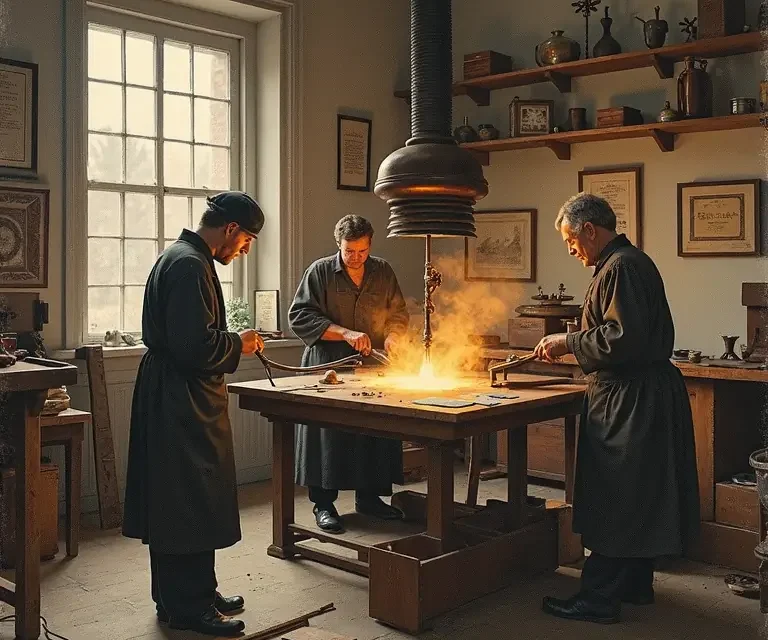

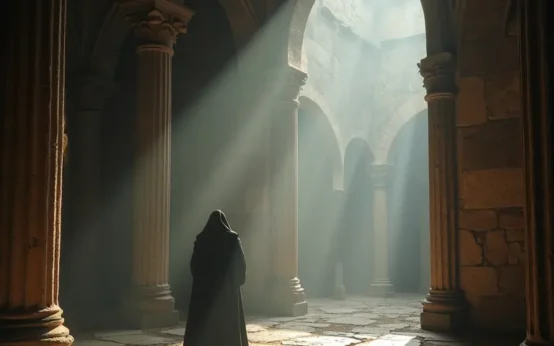 The Curious Acoustics of Historical Echo Chambers: Resonance, Ritual, and Revelation
The Curious Acoustics of Historical Echo Chambers: Resonance, Ritual, and Revelation  The Curious Cartography of Scent: Mapping Perfume Ingredients Through History
The Curious Cartography of Scent: Mapping Perfume Ingredients Through History  The Surprisingly Consistent Science of Historical Ice Harvesting – A Frozen History of Commerce & Preservation
The Surprisingly Consistent Science of Historical Ice Harvesting – A Frozen History of Commerce & Preservation 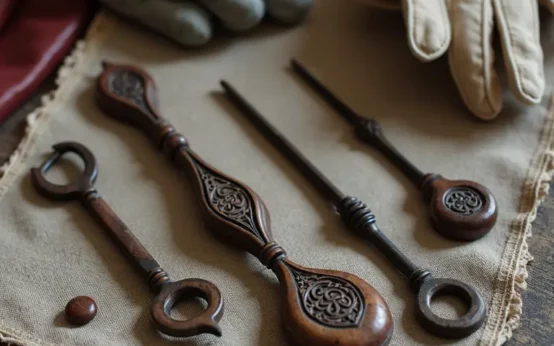 The Unexpectedly Consistent Science of Historical Buttonhooks – Fashion, Function & Forgotten Tools
The Unexpectedly Consistent Science of Historical Buttonhooks – Fashion, Function & Forgotten Tools 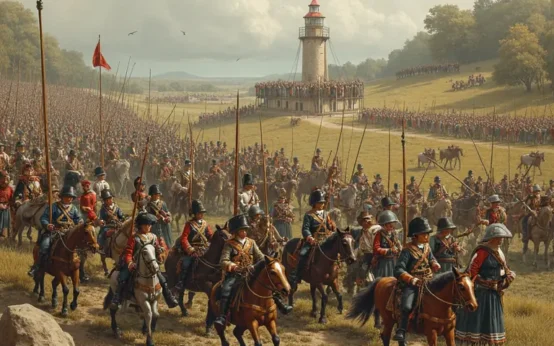 The Surprisingly Consistent Science of Historical Toy Soldiers – Miniature Warfare, Materials & Collective Play
The Surprisingly Consistent Science of Historical Toy Soldiers – Miniature Warfare, Materials & Collective Play 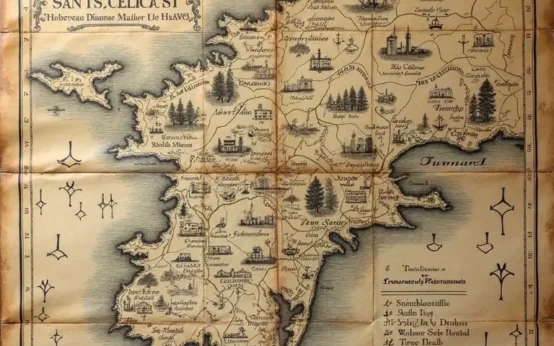 The Surprisingly Consistent Etymology of Place Names – Uncovering Stories in Street & Town Origins
The Surprisingly Consistent Etymology of Place Names – Uncovering Stories in Street & Town Origins